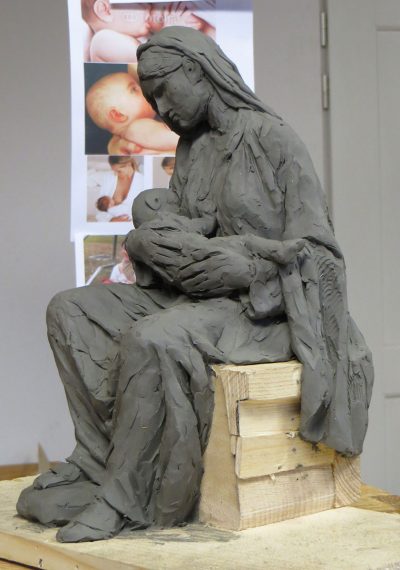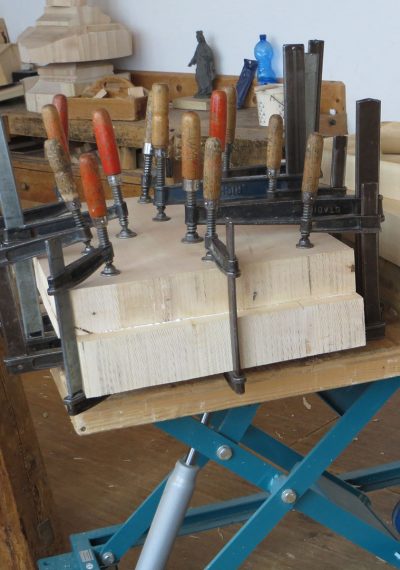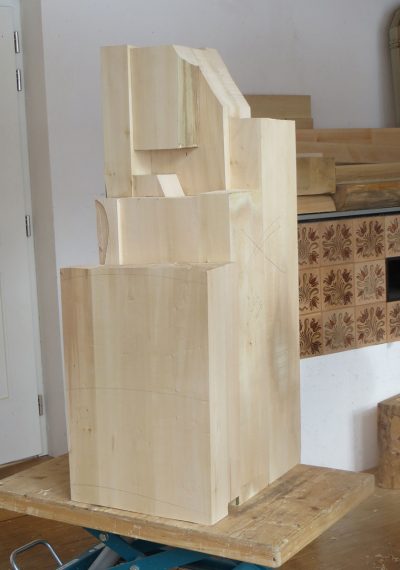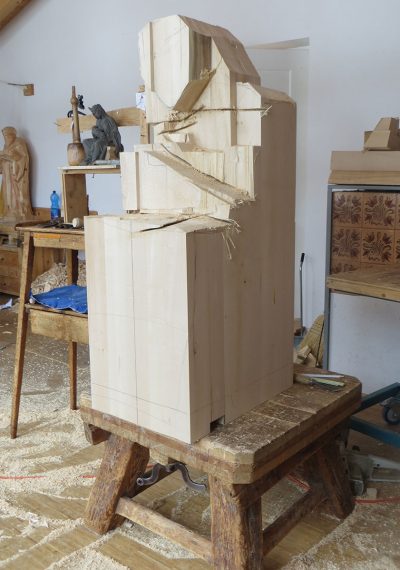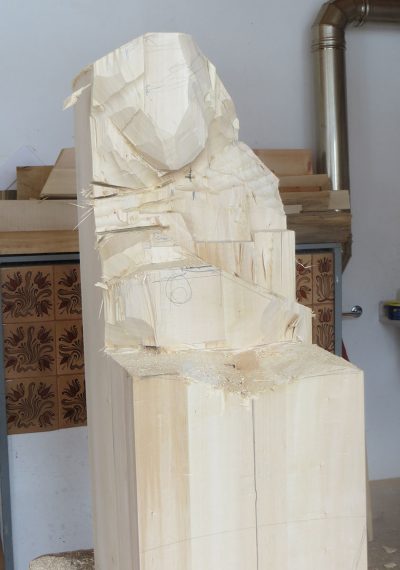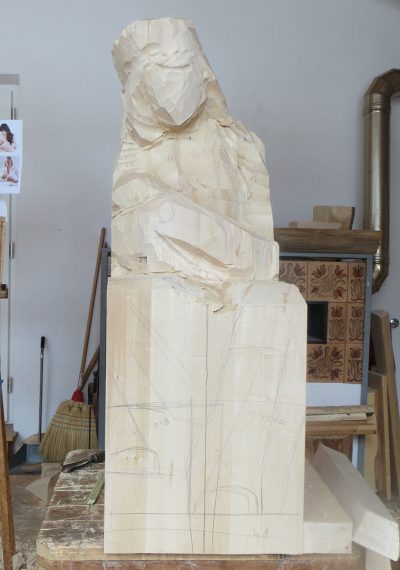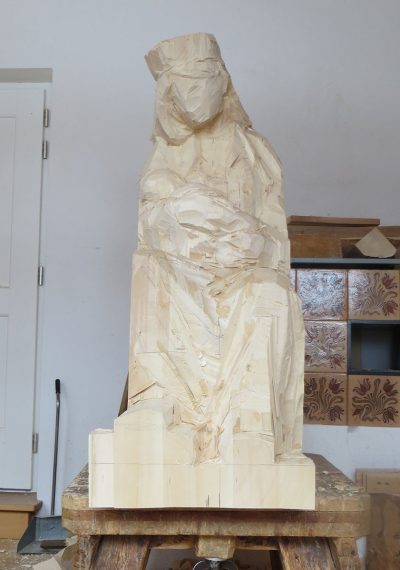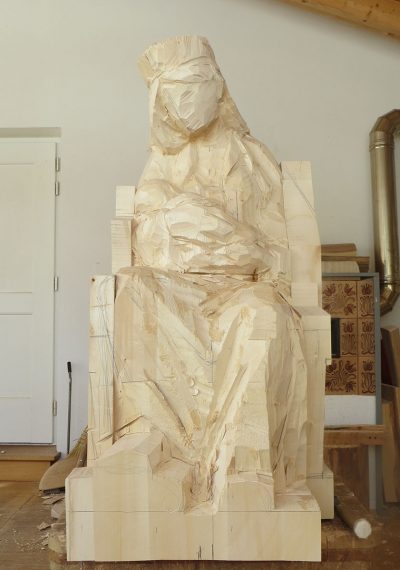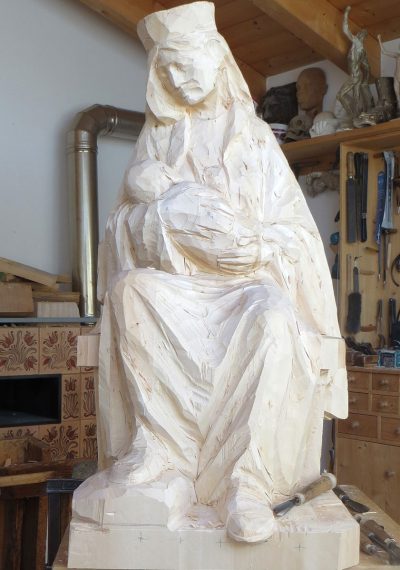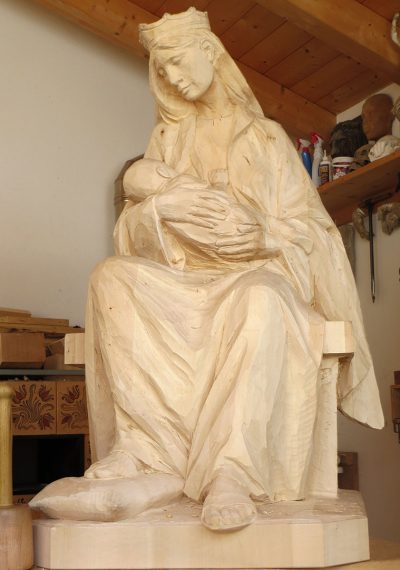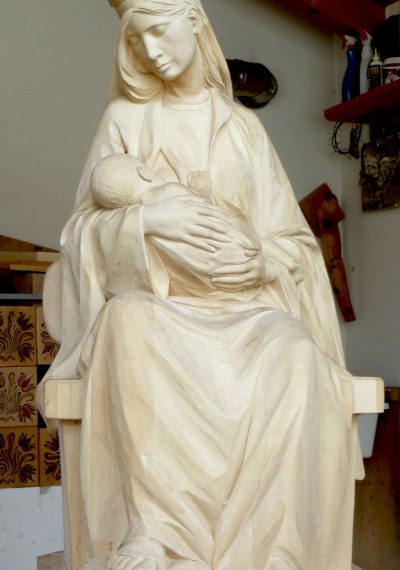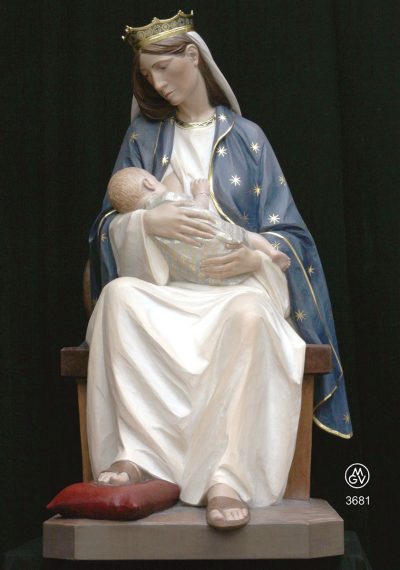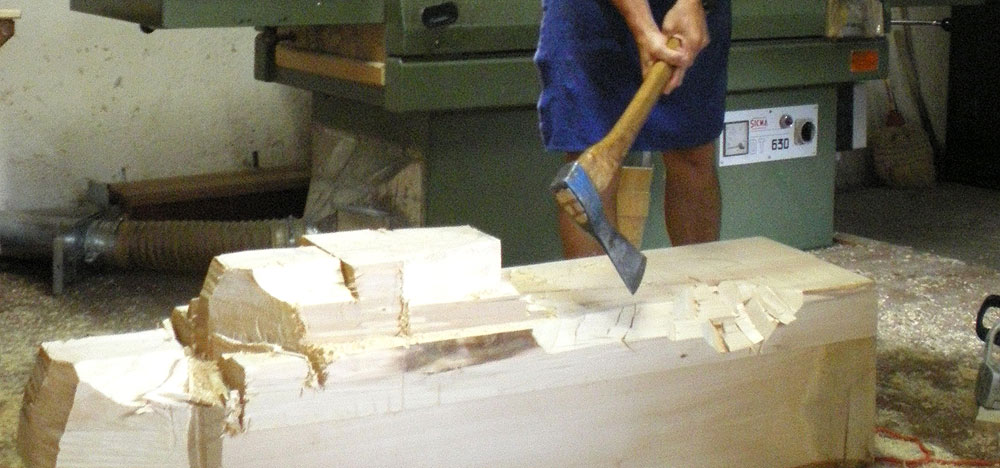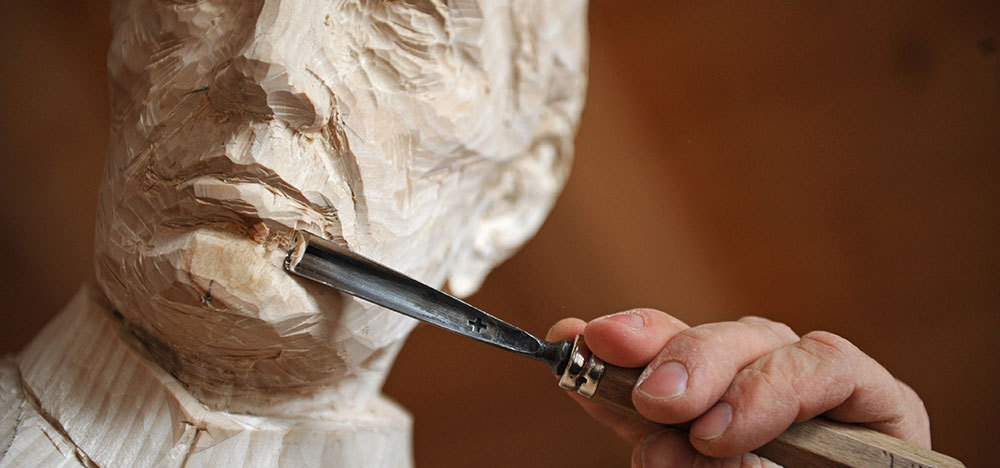The process of creating a sculpture
The development process
Statue of Our Lady: from the first clay model to the first cuts until the finished statue.
For each sculpture different specialized artists and artisans work in a team. In our studio we have:
- sculptors, specialized in creating and designing statues in wood, clay and marble;
- ornamental sculptors, specialized in creating decorations in wood, crowns for statues, baroque or gothic altars etc.;
- cabinet makers, who create altars, lectern and basements;
- painters, to color the statues and create paintings;
- gilders, specialized in stucco and gold leaf applications;
- turners, to create crowns and columns;
- restorers, to preserve and fix damages on antique work;
- artist blacksmiths and other skilled artisans.
All commissioned work of art begin life in discussions between artist and client, since it is essential that the sculptor know the client’s desires, and the latter will want to consider the artist’s ideas regarding presentation. The tentative plan which results from the consultation step is then translated into the tangible form of simple sketches, and also, in many cases, into a small scale clay model. The model is especially desirable, inasmuch as his three-dimensional character aids visualisation of the final piece, and the easy workable material facilitates incorporation of needed or requested modifications.
In the next step of process, the sculptor fabricates a blank of the appropriate shape and size by joining together planks of well seasoned and dried wood with good synthetic glues. The woods most used in our studio are linden and pine, but sometimes chestnut and walnut, which are much harder to work, are employed.
Transformation of the blank into the desired artistic work begins by roughly drawing the chosen figure on the wood, then using an axe or a chainsaw to remove large masses of waste wood, i.e., wood which will not be part of the sculpture itself. Next, the desired figure is formed and shaped, first using large gouges and a mallet, and then switching to smaller tools as the final shape is approached.
After the rough-hewn form of the sculpture has been achieved, the piece is inspected by an expert from the Chamber of Commerce, who inserts in the base a metal disk carrying the trade mark for entirely hand carved pieces. Later, when the piece is complete, an official will reinspect it and issue a certificate attesting to its completely hand carved nature. All of our sculptures are certified in this manner.
Artistic feeling
In the last phase of carving, small gouges guided by the expert hands of the artist are employed to smooth rough surfaces while producing the exact final form of the piece, and to incorporate fine details. This is the phase in which intensive schooling and training and long experience are most important, because good results depend solely upon the deft touch of the sculptor.
Once sculpting is complete, the work is transferred to the painter for finishing. Some pieces require a natural look, and they receive only a layer of wax or a light wood-tone dye. However, most sculptures for display in churches will be colored, using traditional oil colors and fine gold leaf.
Mussner G. Vincenzo © 2019 | Programmierung: Werbeagentur Südtirol

